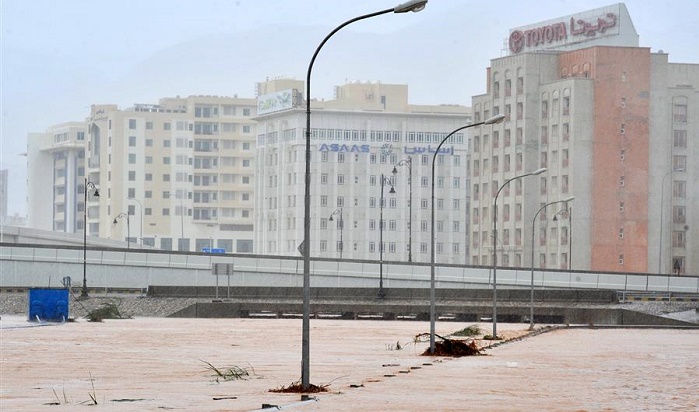
Muscat: Emergency services and rescue teams in Oman have selflessly and tirelessly worked to keep people safe during cyclone Shaheen, often at cost of their own wellbeing.
With Shaheen expected to make landfall on Sunday evening, the country’s National Committee for Emergency Management (NCEM), which is made up of the organisations that ensure public safety, swung into action well in advance.
Shelters were prepared in a number of governorates, including North and South Al Batinah (where the cyclone’s impact was most felt), Muscat, Buraimi, Dhahirah, North and South Sharqiyah, and Musandam.
In these areas, people were warned to stay indoors, as those who stepped outside would be facing wind speeds of more than 116 km/hr, torrential rain, flash flooding, and sea waves that could reach heights of up to 12 metres.
Ahead of the cyclone’s arrival, personnel from the Civil Defence and Ambulance Authority (CDAA), with little regard for their own lives, drove loudspeaker vans in neighbourhoods that were most susceptible to flooding and water damage, asking people to move to shelter when required.
When the flooding did come, and the waves crashed onto coastal roads, emergency services closed them off to the public for their own safety, once again putting themselves in the midst of danger so that the rest of us did not need to do so.
Several areas in Muscat and the surrounding regions required rescue personnel to wade through thigh-deep water and into flooded homes to rescue people. In some instances, they unhesitatingly jumped into inflatable rafts and hauled people to safety.
Emergency personnel were also required to enter homes to take people to shelters to ensure their safety. In one instance, at 7:15 on Sunday morning, they entered a flooded home in Muttrah to rescue seven people, just two hours after their colleagues finished responding to about 22 separate reports in Muscat that saw them help 55 people, all of whom were fortunately in good health.
Another example of their bravery saw Royal Oman Police officers braving the high waves that came crashing down onto land, as they stood guard on the Muttrah Corniche road by the seashore when the weather meant it could no longer be used by motorists.
People from many areas in the northern parts of Oman needed evacuation: Qurum’s commercial district, so popular and familiar with people in the country, was among those to be closed. A large portion of Sultan Qaboos Street was also closed to traffic.
At least 600 people were taken to about 10 relief centres in Liwa and Shina in North Al Batinah, with many more families being escorted to shelters in Barka. In total, more than 2,700 individuals were accommodated in 45 out of some 136 relief centres in the country, according to the NCEM.
As the effects of Shaheen intensified, and relief supplies and personnel were needed across more and more parts of the impact zone, it was decided to halt traffic across most of the roads in the capital, with the exception of Muscat Expressway, as well as North and South Al Batinah, so that vehicles carrying man and materiel could quickly reach where they were required.
“As the eye of the cyclone is approaching the region located between the governorates of North and South Batinah, due to the expected heavy rain and winds accompanying it, it is decided to stop traffic between the two governorates,” said the NCEM in its advisory. “Further, movement between the two locations is not allowed unless necessary.
The NCEM asked people to abide by the necessary instructions, so that everyone – including teams out in the field – could stay safe.
Sadly, however, Shaheen has not been without its casualties: a child was discovered dead in a flooded area in Amerat, while two workers lost their lives when the weather damaged a housing complex in Rusayl.
Throughout the cyclone, while some health centres needed to be closed, others have stayed open despite the torrential rain and strong winds, providing care to those who require it.